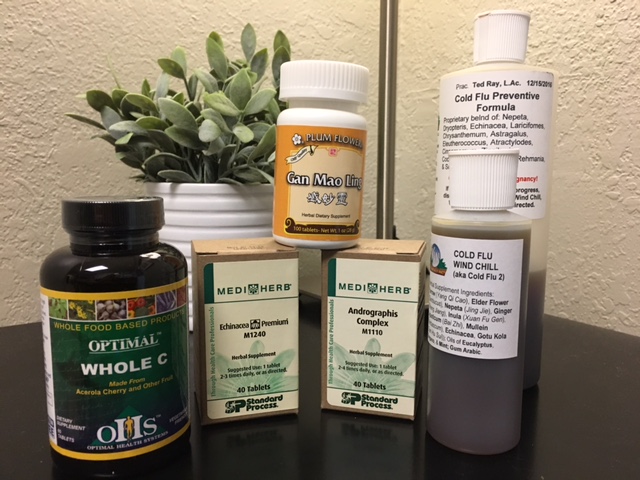Flax Seed Oil- It’s Really That Good for You!
Introduction to Flax Seed
Flax seed (also called linseed) is one of the oldest crops in the world. From ancient China and Egypt, to modern day America, flax has been an important health food crop all over the world. King Charlemagne, who united much of Europe in the Middle Ages, was so fond of the health benefits of flax seed, that he passed laws to ensure his subjects ate them on a regular basis.
What is it that makes flax and flax seed oil so great? For starters it’s a great source of micronutrients, which includes B vitamins, manganese, and selenium. More significantly, however, flax seed oil is one of the richest sources of the omega 3 essential fatty acids in the plant kingdom.
Flax comes in 3 main forms, flax seed, flax meal, and flax seed oil. Since the omega fatty acids in flax breakdown quickly in the presence of heat and oxygen, it’s important to choose a carefully produced flax seed oil.
Here’s what I’ll cover- feel free to skip ahead to the section that interests you:
- Benefits of flax seed oil
- Flax seed oil & inflammation
- Omega 6/omega 3 ratio and why you should care
- Brain health & EFA deficiencies
- Flax seed oil quality issues
- Dosing
- A bit of chemistry
 Major Benefits Of Flax seed Oil
Major Benefits Of Flax seed Oil
- Protects the heart
- Fights inflammation
- Protects the eyes from degeneration
- Supports glucose metabolism
- Prevents diabetes
- Strengthens the immune system
- Supports the brain and nervous system
- Protects the skin
- Lowers blood pressure
Omega Fatty Acids & Inflammation
Fatty acids are common in nature, and make up about 14-28% of our healthy body weight. We can make these fatty acids depending on what we need. All except the essential fatty acids that is.
Essential fatty acids (EFA’s) cannot be made by the human body, and therefore need to come from the diet– these are the omega 3 and omega 6 fatty acids. We use these essential fatty acids as building blocks for a wide range of chemicals in the human body including those used in inflammatory processes.
Inflammation works through a complex interaction of tiny messenger molecules known as cytokines and prostaglandins. These messengers are created from omega 6 fatty acids (in the form of arachidonic acid). These messengers then go on to trigger swelling, pain, and the narrowing of blood vessels to cause what we know as inflammation.
Much of this process relies on omega 6 fatty acid to produce the messengers responsible for the whole thing so you could call omega 6 a “proinflammatory” because it ‘causes” inflammation.
Omega 3 on the other hand is used to create the opposite messengers that ultimately stop the inflammation process. In a healthy body, these processes are working in unison. They oppose each other to maintain balance and homeostasis in the body.
 Are You out of Balance?
Are You out of Balance?
In most people. the omega 3 to omega 6 fatty acid levels are unbalanced, making it difficult to maintain homeostasis. Intakes of omega 6 can be as high as 10 times the intake as omega 3 in most people in America– even those who eat “healthy”.
This is because omega 3 fatty acids are harder to get in the diet than omega 6. Foods like fish oil, chia seeds, and flax seed are some of the best sources of omega 3 fatty acids we have. For many, these are not staples in the diet. Instead Americans consume high amounts omega 6 fatty acids in foods like mayonnaise, pork, chicken, eggs, butter, and beef.
The ideal ratio of omega 6 to omega 3 is 1:1. In America, the average ratio of omega 6 to omega 3 fatty acids is estimated to be about 10:1 with some reports suggesting the actual ratio is closer to 30:1. No wonder inflammatory disease is so prevalent!
In just 100g of flax seed oil, there is about 53,304 mg of total omega 3 fatty acids, and 12,701 mg of total omega 6 fatty acids (5). This is about a 4:1 ratio of omega 3 to 6, which will go a long way in leveling the high omega 6 to omega 3 ratio our society is plagued with today if consumed on a daily basis.
Why You should really care about this ratio?
Long term inflammation has been linked with a wide range of chronic health conditions including heart disease, diabetes, dementia, and autoimmune disease. [3, 4]. Bringing the ratio of omega 3 to omega 6 fatty acids back towards 1:1 will go a long way in preventing this chronic inflammatory state and the resulting heart and cerebrovascular disease. Flax seed oil makes this goal achievable with a staggering 56% omega 3 fatty acid content
Your Brain Needs Omega 3s!
Omega 3 fatty acids do more than just oppose inflammation. Along with omega 6, and the the non-essential omega 9 fatty acids, they form an integral part of our cell membranes, especially throughout the nervous system. Their naturally flexible shape makes them perfect for adding fluidity to a cell membrane. This protects it from damage and gives it the ability to flex and conform to the environment around it.
Without enough omega fatty acids in the diet, the cells can become stiff and die, nerve transmission is slowed, and we can begin to feel anxious or depressed.
Signs of Essential Fatty Acid Deficiency:
- Dry scalp/dandruff
- Dry cracked heels
- Soft brittle nails
- Fatigue
- Chronic inflammatory conditions
- Attention and concentration difficulties
- Dry eyes
- Eczema
- Depression/Anxiety
- Poor sleep quality
- Joint pain
Not All Flax Seed Is Created Equal
 Cold Pressed vs Conventional Oil Extraction
Cold Pressed vs Conventional Oil Extraction
When purchasing flax seed oil there are a few things to keep in mind to ensure you get all the health benefits flax seed oil can provide.
Omega fatty acids are easily broken down in the presence of heat and oxygen. When stored naturally in the seed husks of the flax seed, this is not a problem. Once removed from the seed however, this oil needs to be processed carefully to maintain the viable structure of the fatty acids.
Unrefined, cold pressed virgin flax seed oils are far superior to other flax seed oils. This is because the heat generated by conventional seed pressing can breakdown the vast majority of the omega 3 fatty acids present in the seed, rendering them useless for anything aside from metabolic energy.
In my clinic , I only carry brands that extract the oil from a special coldpress process. This maintains the structure of the omega 3 fatty acids. The oil is then sealed in airtight capsules, or stored in UV protected, airtight glass bottles and placed in the fridge. This maintains the highest level of omega 3 fatty acid from the flax seed oil as possible.
Some companies will press the seeds, send it to a different location to filter and bottle, and then another where the oil is branded and poured into smaller bottles to sell. This subjects the oil to the environment far too many times to maintain the oil in its purest and most potent form.
The best flax seed oil manufacturers will do all the seed pressing, filtering, and bottling themselves to minimise the contact the oil has with the ambient air.
Should you Buy High Lignan Flax seed Oils?
Lignans are a type of polyphenolic compound found in plants, which are well known to be a potent source of antioxidants. In pressed flax seed oil, the lignans are left behind during the process and need to be added back in. High quality flax seed oil will have these lignans added back in, which help to provide antioxidant benefits, further supporting the cardiovascular system, brain, and digestive tract.
How Much Flax seed Oil Should I Take?
Flax seed oil is recommended at the following dose:
- 1 tablespoon 1–3 times per day with meals.
- You can take the oil directly, or mix in with a salad or other cold meal.
- Never heat flax seed oil or you will destroy the health promoting omega 3 fatty acids
And Lastly, a Bit of Flax seed Chemistry
As an oil, flax seed oil is high in something called fatty acids. But not all fatty acids are the same, in fact there are hundreds of different types. A fatty acid is basically a long chain of carbon atoms with an acid group on one end. The thing that makes them different is the number of carbons in that chain, and the presence (or absence) of double bonds in the structure. Generally, we prefer the fatty acids with double bonds in their structure, we call these “unsaturated fats”.
Of the unsaturated fats the most common are:
- Linoleic acid (omega 6)
- Alpha-linolenic acid (omega 3)
- Oleic acid (omega 9)
Our bodies have the ability to make a lot of the fatty acids we need from other fat sources, aside from omega 3, and omega 6, which we must obtain from our diet. In flax seed oil, the majority of the fatty acid content is in the form of alpha-linolenic acid (omega 3) which is medically important for several reasons. The rest of the oil content consists of linoleic acid (omega 6), and oleic acid (omega 9).
Sunflower oil and canola oil mainly consist of oleic acid, while sources like poultry and cereal grains are highest in linoleic acid (omega 6).
Flax seed oil is one of the highest sources of omega 3 fatty acid (alpha-linolenic acids) (56% of the oil content) [1].
References:
- Tursunova, M., Ul’chenko, N., Yuldasheva, N., Nigmatullaev, A., & Gusakova, S. (2015). Lipids from seeds of Linum humile. Chemistry of Natural Compounds, 51(2), 228-231. doi:10.1007/s10600-015-1249-0
- Tursunova, M. R., Ul’chenko, N. T., Yuldasheva, N. K., Nigmatullaev, A. M., & Gusakova, S. D. (2015). Lipids from Seeds of Linum humile. Chemistry of natural compounds, 51(2), 228-231.
- Colotta, F., Allavena, P., Sica, A., Garlanda, C., & Mantovani, A. (2009). Cancer-related inflammation, the seventh hallmark of cancer: links to genetic instability. Carcinogenesis, 30(7), 1073-1081.
- Barbieri, M., Ferrucci, L., Corsi, A. M., Macchi, C., Lauretani, F., Bonafè, M., . . . Paolisso, G. (2003). Is chronic inflammation a determinant of blood pressure in the elderly? American Journal of Hypertension, 16(7), 537-43. doi:http://dx.doi.org.ezproxy.laureate.net.au/10.1016/S0895-7061(03)00861-6
- Nutrition Data Self. (2017). Flax seed Oil 100g. (Retrieved august 2017). http://nutritiondata.self.com/facts/fats-and-oils/7554/2
- Jangale, N. M., Devarshi, P. P., Bansode, S. B., Kulkarni, M. J., & Harsulkar, A. M. (2016). Dietary flax seed oil and fish oil ameliorates renal oxidative stress, protein glycation, and inflammation in streptozotocin–nicotinamide-induced diabetic rats. Journal of physiology and biochemistry, 72(2), 327-336.







